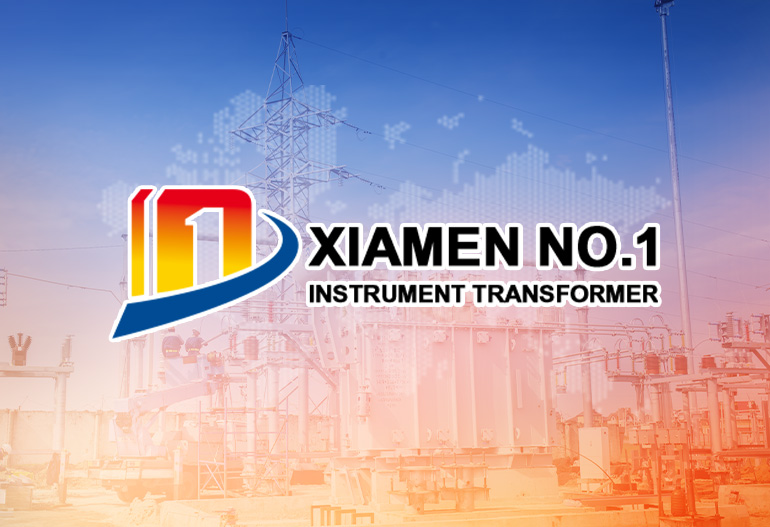Burden Ratings in Potential Transformers: A Technical Overview
Rated Burden: The maximum VA load at which the PT meets its accuracy class (e.g., 0.5 or 1.0) under rated voltage and frequency conditions.
Maximum Burden: The highest VA load the PT can tolerate without overheating or mechanical stress, even if accuracy is compromised. This is often 150–200% of the rated burden.
Metering Errors: Incorrect energy measurements, resulting in billing inaccuracies for utilities or industrial users.
Protection Miscalculations: Relays relying on PT data may underreact or overreact to faults, either failing to isolate issues or triggering unnecessary outages.
Degrade insulation materials, shortening the PT’s lifespan.
Cause thermal runaway in extreme cases, leading to insulation breakdown or fire.
Disrupt sensitive electronics in metering or control systems.
Reduce the accuracy of protective relays, which depend on stable voltage references.
Core Material and Geometry: High-permeability core materials (e.g., grain-oriented silicon steel) reduce magnetic losses, allowing the PT to handle higher burdens without overheating. Larger core cross-sections also improve heat dissipation, increasing burden capacity.
Winding Conductivity: Secondary windings made from high-purity copper (low resistance) minimize I²R losses, enabling higher VA ratings compared to windings with higher resistance (e.g., aluminum).
Insulation Class: PTs with higher insulation classes (e.g., Class F, 155°C) can tolerate more heat, supporting higher burden ratings than those with lower classes (e.g., Class B, 130°C).
Cooling Mechanism: Oil-immersed PTs typically have higher burden ratings than dry-type PTs due to better heat transfer through convection in oil.
Frequency: Burden ratings are specified for a nominal frequency (e.g., 50 Hz or 60 Hz). Operation at off-nominal frequencies can increase losses, reducing the effective burden capacity. For example, a 50 Hz PT operated at 60 Hz may experience higher eddy current losses, lowering its maximum safe burden.
Ambient Temperature: High ambient temperatures (e.g., in outdoor substations) reduce the PT’s ability to dissipate heat, effectively lowering its burden rating. Manufacturers often provide derating curves showing reduced burden capacity at temperatures above 30°C.
Voltage Variation: Overvoltage conditions (e.g., 110% of rated voltage) increase core losses, reducing the available capacity for burden. Conversely, undervoltage may lower losses but can cause accuracy issues in connected devices.
Active Devices: Meters, relays, and control systems draw real power (watts), contributing to resistive losses.
Reactive Components: Inductive loads (e.g., relay coils) or capacitive loads (e.g., cable capacitance) introduce reactive power (vars), increasing the apparent power (VA) burden.
Wiring Losses: Secondary cables have resistance and inductance, which add to the total burden. Longer cables or smaller gauge wires increase this contribution significantly. For example, 100 feet of 18 AWG wire adds approximately 2.5 Ω, equivalent to ~5 VA at 110 V (110² / 2.5 = 4840 VA, but actual loss depends on current).
List Connected Devices: Identify all devices connected to the PT’s secondary, including meters, relays, transducers, and indicators.
Determine Individual Burdens: Check manufacturer datasheets for each device’s VA rating at nominal voltage (e.g., a digital meter may require 5 VA, a protective relay 10 VA).
Account for Wiring Losses: Calculate the burden from secondary wiring using the formula:
Sum Total Burden: Add the burdens of all devices and wiring to get the total load.
Compare to PT Rating: Ensure the total burden is ≤ the PT’s rated burden. If exceeding, either reduce the load (e.g., remove non-critical devices) or select a PT with a higher rating.
1 digital energy meter (5 VA)
2 protective relays (10 VA each)
1 indicator light (2 VA)
30 meters of 1.5 mm² copper wiring (impedance = 0.4 Ω, contributing 30.25 VA)
Standard Burden Values: Common rated burdens include 10 VA, 20 VA, 50 VA, 100 VA, 200 VA, 500 VA, and 1000 VA.
Accuracy Classes: For each class (e.g., 0.1, 0.2, 0.5), the standard defines maximum ratio and phase errors at rated burden and 25% of rated burden.
Temperature Rise Limits: Maximum allowable temperature rises (e.g., 60 K for Class A insulation) when operating at rated burden, ensuring thermal safety.
Burden Designations: Burdens are often designated by letters (e.g., B-0.1, B-0.2) corresponding to VA values (e.g., 10 VA, 20 VA).
Voltage Ratings: The standard includes specific burden requirements for PTs used in distribution (e.g., 12.47 kV) and transmission (e.g., 115 kV) systems.
Short-Time Overload Capability: Specifies maximum burdens for short durations (e.g., 200% of rated burden for 30 minutes) without damage.
Challenge: Adding new devices to an existing secondary circuit (e.g., retrofitting smart meters) can exceed the PT’s rated burden, causing accuracy degradation or overheating.
Mitigation:
Upgrade the PT: Replace the existing PT with one of higher burden rating.
Reduce Load: Remove non-essential devices or replace high-VA devices with low-power alternatives (e.g., solid-state relays instead of electromechanical ones).
Use a Burden Resistor: Install a resistor in parallel with the secondary circuit to 分流 excess current, though this may reduce accuracy.
Challenge: Long secondary cables (e.g., in large substations) introduce significant impedance, increasing the total burden and causing voltage sag.
Mitigation:
Use Larger Gauge Cable: Thicker wires reduce resistance, lowering wiring burden. For example, upgrading from 18 AWG to 14 AWG cable reduces resistance by ~60% for the same length.
Shorten Cable Length: Route cables directly to minimize distance between the PT and connected devices.
Install a Voltage Regulator: A small transformer or booster can compensate for voltage drop in long cables.
Challenge: Inductive loads (e.g., relay coils) increase the reactive component of the burden, raising apparent power (VA) without increasing real power (watts). This can push the total burden above the rated limit even if active power is low.
Mitigation:
Add Power Factor Correction Capacitors: Connecting capacitors in parallel with inductive loads reduces reactive power, lowering the total VA burden.
Use Low-Reactance Devices: Replace inductive relays with solid-state versions, which have minimal reactive components.
Challenge: In hot climates (e.g., desert regions) or enclosed spaces, high ambient temperatures reduce the PT’s effective burden rating, increasing the risk of overheating.
Mitigation:
Select a Higher Insulation Class: PTs with Class H insulation (180°C) can operate at higher temperatures than Class B (130°C), maintaining burden capacity in heat.
Improve Cooling: Install fans or heat sinks in enclosures to reduce ambient temperature around the PT.
Derate the PT: Reduce the maximum allowable burden based on manufacturer-provided derating curves (e.g., 80% of rated burden at 40°C).
Revenue meters (5–20 VA)
Overvoltage/undervoltage relays (10–30 VA)
SCADA transducers (5–15 VA)
Process control systems (20–50 VA)
Motor protection relays (15–40 VA)
Energy management systems (10–25 VA)
Inverter control systems (10–30 VA)
Grid synchronization relays (20–50 VA)
Data loggers (5–15 VA)



